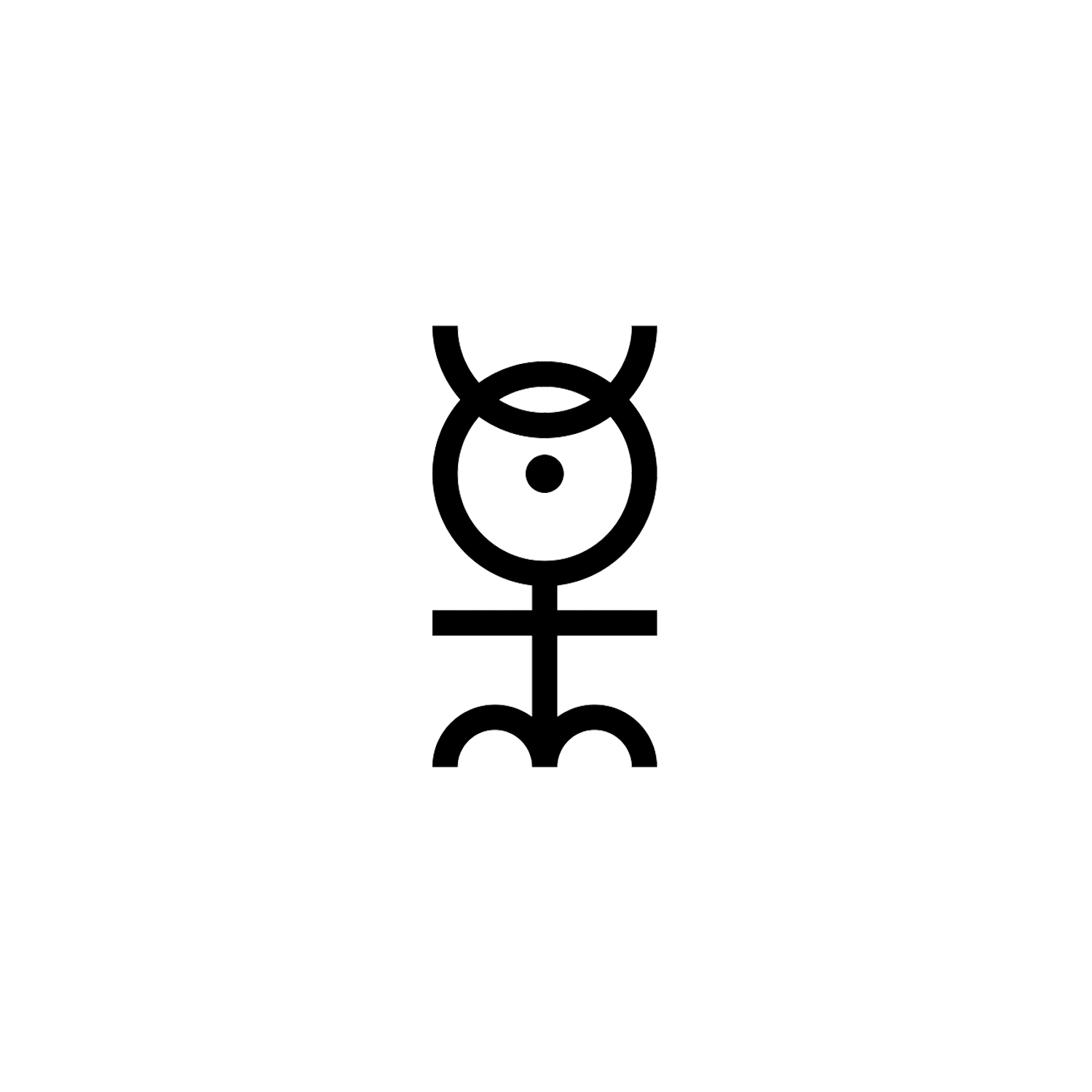the dot within a circle, also known as a "circumpunct," is a symbol as old as humanity itself.

in its earliest days, it was a direct representation of the sun. as we advanced and became more creative, its purpose shifted from iconography to symbol.
the circumpunct was used in ancient hieroglyphics to represent Ra, the sun god, as the sun itself.
the dot was the radiant center— the origin of all energy— and the surrounding circle marked the boundary of the energy's influence.
this basic form— a center within a (w)hole— became shorthand for the source of all things in many early cultures.
a symbol for creation, vitality, and the divine spark or source that animates everything.
as with many aspects of our shared human culture, the circumpunct flowed from the Nile River Valley to the Mediterranean Sea by way of the conquests of Alexander the Great and the legendary city of Alexandria, where African and Greek thought mingled and evolved, and was eventually adopted by the Hermetic philosophers.
these early texts recontextualized symbols like the circumpunct away from its original meaning as representative of the sun or a god, and instead as the basis for a metaphysical diagram of creation. much later, mathematician John Dee would describe the circumpunct as the origin of motion and vitality— the “seed” from which the rest of the Monad unfolds.

John Dee's depiction of the monad.
Hermetic teachings continued until the fall of the Roman Empire, when Hermetic studies were picked up by Islamic scholars and mystics.
during this process, the circumpunct took new meaning by shedding its form.
this was the Islamic Golden Age, and though Hermetic philosophy served to help refine ideas developed over a century of thought, the direct traditions and symbols were largely left to the side.
despite this, the spirit of the circumpunct remained through art and philosophy.
much Islamic art from this time contained geometric designs where all patterns radiated from a single central point— representing tawhid (the oneness of God).

another area the circumpunct appeared in was Islamic alchemy (al-kīmiyāʾ— the root of the word "alchemy"). in alchemical circles, the meaning of the circumpunct remained largely untouched.
no longer a stand-in for Ra, the circumpunct represented the sun itself as a metaphor for perfection and purity.
similarly, gold was referred to as the metal of the sun and associated with the divine intellect.
this brings us to European alchemy and how we understand the circumpunct today.
through war and conquest once again, the mystical teachings of Islam were taken and studied, translated into Latin, and disseminated across the "western world" as the Renaissance began to take hold throughout Europe.
here, in the diagrams and scribblings of these late medieval and early Renaissance alchemists, the circumpunct came to represent gold and the perfected self— the end goal of the Magnum Opus, the central pursuit of alchemy (lead into gold).
few symbols have stood the test of time like the circumpunct, though it is rarely discussed today.
a sun. a god. a source. a self.
since the earliest civilizations— no matter its meaning— the circumpunct has inspired thought and creation across generations of both friends and enemies, conquerors and conquered.
wearing it should serve as a reminder of your commitment to your higher self— that no matter where you are, or what or who you are perceived to be, everything you want to be is already within you.
if this speaks to you, use code CIRCUMPUNCT for 25% off the circumpunct shirt.
⊙


0 comments